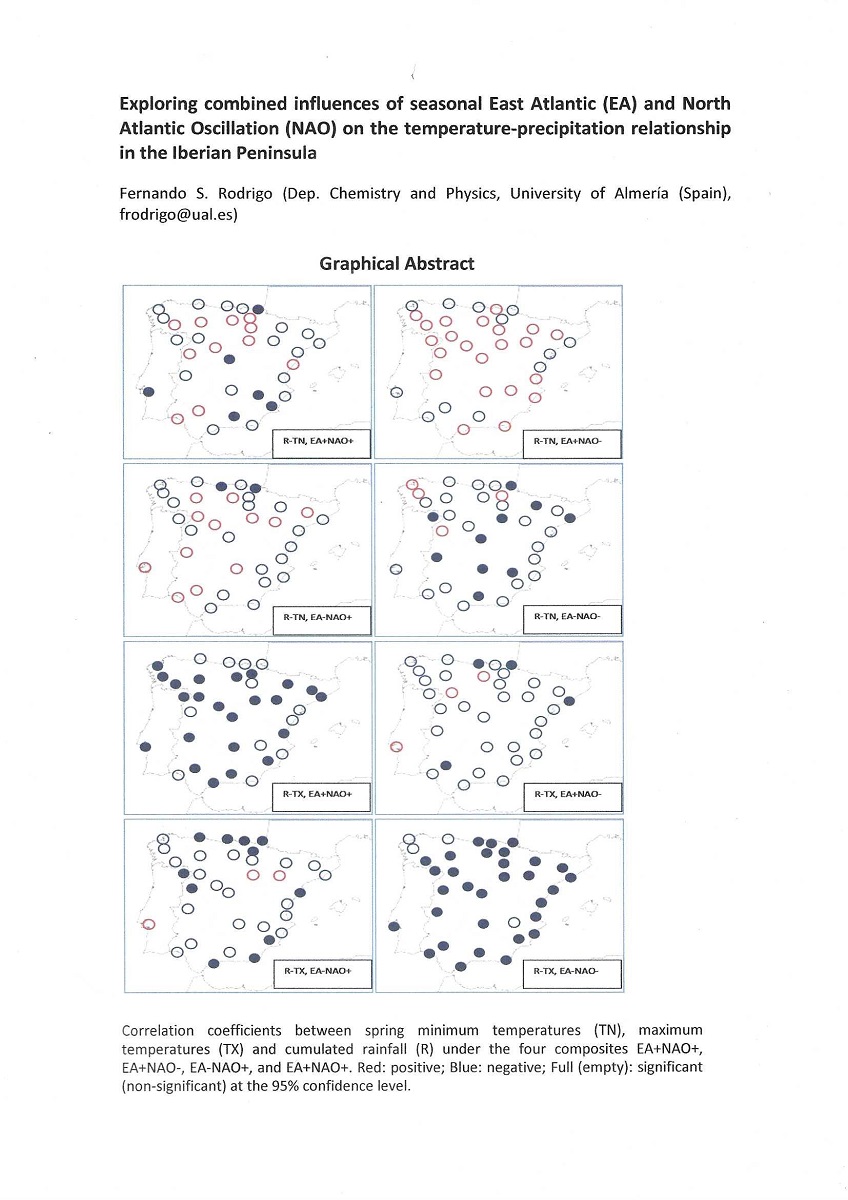The combined influence of the North Atlantic Oscillation (NAO) and the East Atlantic (EA) patterns on the covariability of temperatures and precipitation in 35 stations of the Iberian Peninsula during the period 1950-2019 is analysed in this work. Four EA-NAO composites were defined from teleconnection patterns positive and negative phases: EA+NAO+, EA+NAO-, EA-NAO+, and EA-NAO-. Daily data of maximum and minimum temperature were used to obtain seasonal means (TX, and TN, respectively), and the covariability of these variables with accumulated seasonal rainfall (R) was studied comparing results obtained for different NAO and EA composites. Main results indicate slight differences in the spatial coverage of correlation coefficients between R and temperature variables, except in spring when the generalized negative relationship between R and TX under EA+NAO+ and EA-NAO- disappears under EA-NAO+ and EA+NAO- composites. This result may be useful to interpret and discuss historical reconstructions of Iberian climate.

